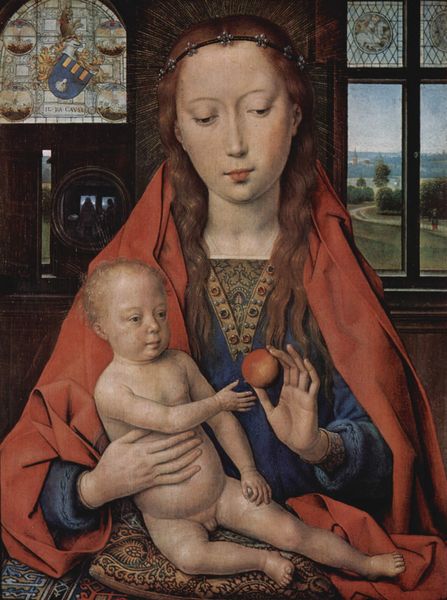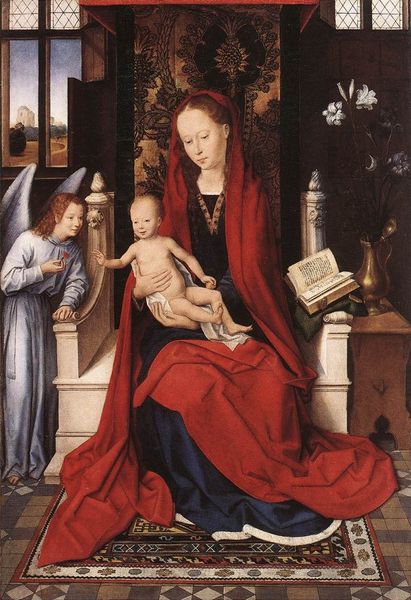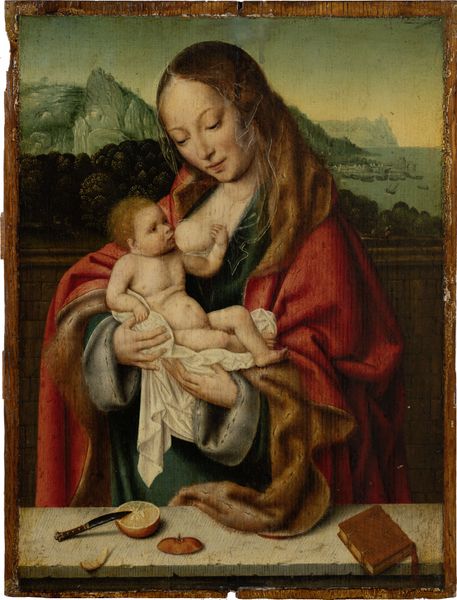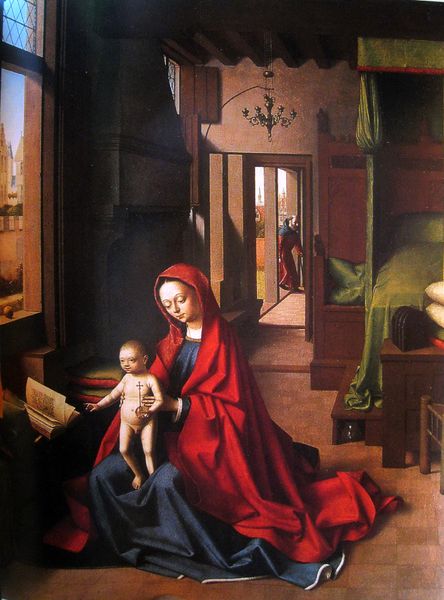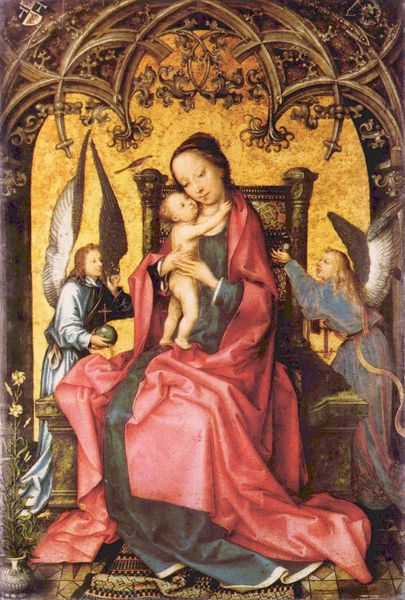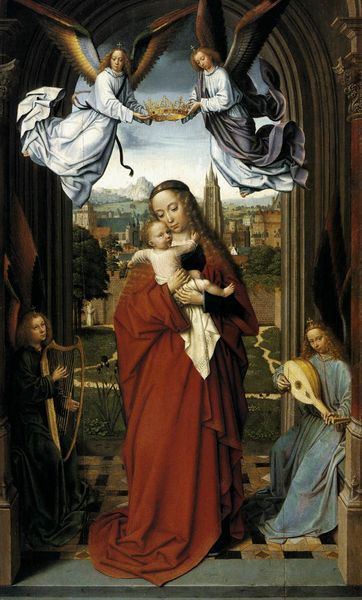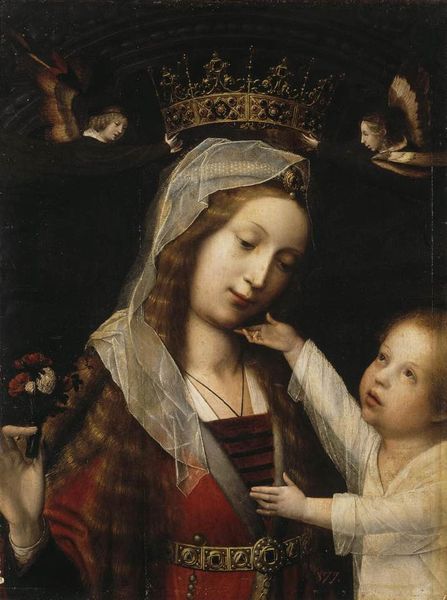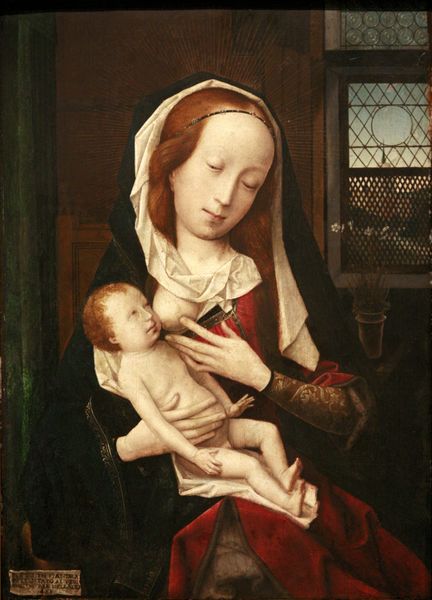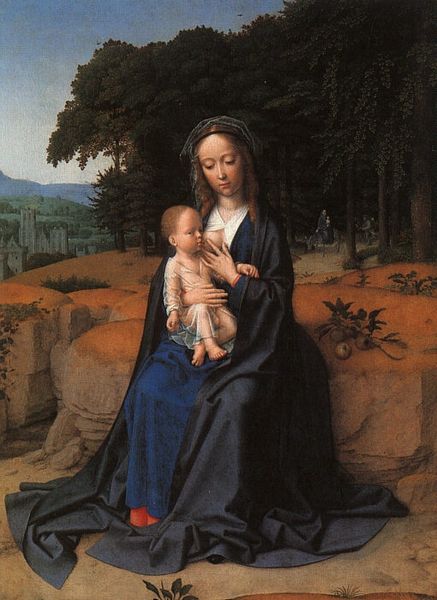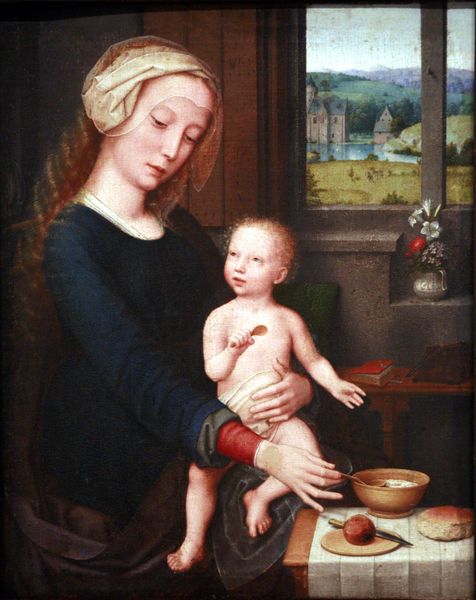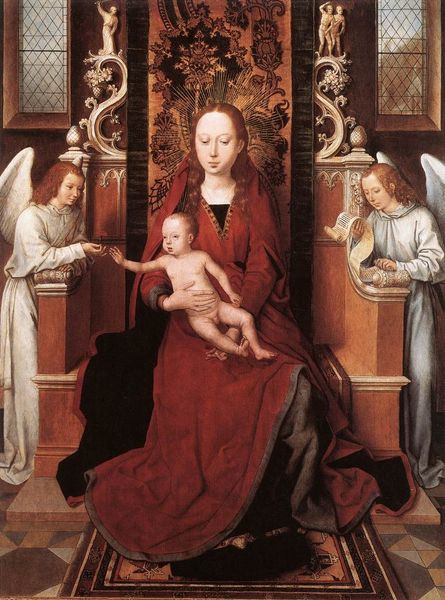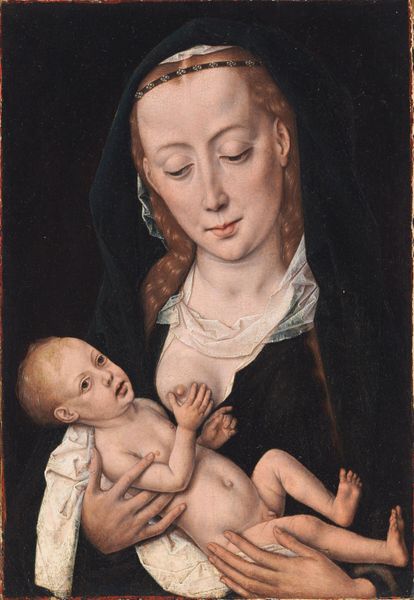
The Ince Hall Madonna (The Virgin and Child Reading) 1433
0:00
0:00
painting, oil-paint
#
painting
#
oil-paint
#
furniture
#
figuration
#
historical fashion
#
child
#
traditional dress
#
christianity
#
genre-painting
#
history-painting
#
northern-renaissance
#
lady
Dimensions: 19.5 x 26.5 cm
Copyright: Public domain
Editor: Here we have Jan van Eyck's "The Ince Hall Madonna," painted in 1433 using oil paint. It's striking how domestic the scene feels, even with the clear religious subject matter. What significance do you see in portraying the Virgin Mary in this way? Curator: The painting exemplifies the shift in the Northern Renaissance towards humanizing religious figures and embedding them in relatable contemporary settings. It wasn’t merely about depicting the divine, but rather showing the Virgin Mary in a space that mirrors the rising affluence of the merchant class. Note the richness of her robes, the ornate tapestry, the subtle detail in the objects around them. Van Eyck is subtly aligning religious virtue with earthly prosperity, isn’t he? Editor: So, it’s about elevating the status of the everyday, rather than just depicting a heavenly scene? Is this a reflection of changing societal values at the time? Curator: Precisely. Consider the intended audience. Such a painting was likely commissioned for a private home, a place for contemplation and display. By showing the Madonna in this comfortable, almost bourgeois setting, Van Eyck invites the viewer into a closer, more intimate relationship with the sacred. It moves the holy figure out of the formal, removed church setting and into the personal sphere, mirroring and validating the domestic space of the patron. What do you think about the implications this might have for the public's perception of religious imagery? Editor: That’s a compelling idea! It blurs the lines between the sacred and the secular, maybe giving people more access and control over their faith through visual means. It makes you wonder how viewers at the time really received these paintings in their homes. Curator: And it showcases the emerging power of art itself as a status symbol, a tool for negotiating one's place within a changing society. So much meaning embedded in a seemingly simple domestic scene. Editor: This really gives me a richer understanding of the art and its moment. Thanks!
Comments
No comments
Be the first to comment and join the conversation on the ultimate creative platform.
